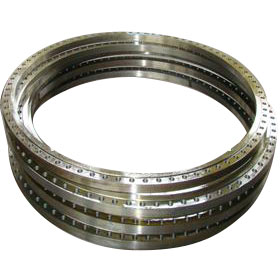Wind Power Flange: Critical Component for Wind Turbine Assembly and Reliability
2025-07-04
A wind power flangeis an essential mechanical component used in the assembly and connection of wind turbine structures. Designed to securely join shafts, hubs, and other rotating parts, wind power flanges ensure stability, safety, and efficient transmission of mechanical power in wind energy systems.
What Is a Wind Power Flange?
A wind power flange is a specially engineered flange used in wind turbines to connect components such as the main shaft to the gearbox or generator. These flanges must withstand high mechanical loads, vibrations, and harsh environmental conditions, making their design and material quality critical for turbine performance and longevity.

Key Features of Wind Power Flanges
High Strength:Manufactured from robust steel alloys to bear heavy loads and torque.
Precision Machining:Ensures accurate alignment and fit between connected parts.
Corrosion Resistance:Treated with coatings or made from corrosion-resistant materials to endure outdoor exposure.
Custom Design:Tailored to specific turbine models and sizes.
Durability:Engineered to operate reliably over long service intervals with minimal maintenance.
Applications of Wind Power Flanges
Main Shaft Connection:Linking the rotor shaft to the gearbox or generator.
Yaw and Pitch Systems:Facilitating the adjustment mechanisms that optimize turbine orientation.
Tower and Nacelle Assembly:Connecting structural components securely.
Blade Mounting:Supporting the attachment of blades to hubs.
Maintenance and Repair:Allowing for modular replacement of turbine parts.
Advantages of Using Quality Wind Power Flanges
Enhanced Safety:Secure connections reduce the risk of mechanical failure.
Improved Efficiency:Precise alignment minimizes energy loss due to vibration or misfit.
Longevity:High-quality materials resist fatigue and environmental wear.
Ease of Installation:Standardized designs enable efficient assembly and maintenance.
Cost Savings:Durable components reduce downtime and replacement frequency.
Considerations When Selecting Wind Power Flanges
Material Grade:Choose high-grade steel or alloy suitable for load and environmental conditions.
Design Specifications:Ensure flange dimensions and bolt patterns match turbine requirements.
Surface Treatment:Opt for coatings like galvanization or painting to enhance corrosion resistance.
Certification:Comply with industry standards for wind turbine components.
Supplier Reliability:Source from reputable manufacturers specializing in wind energy parts.
Conclusion
Wind power flanges play a vital role in the structural integrity and operational efficiency of wind turbines. Their ability to withstand demanding mechanical stresses and environmental challenges makes them indispensable in renewable energy infrastructure. Selecting high-quality wind power flanges is key to maximizing turbine performance and ensuring sustainable energy production.


